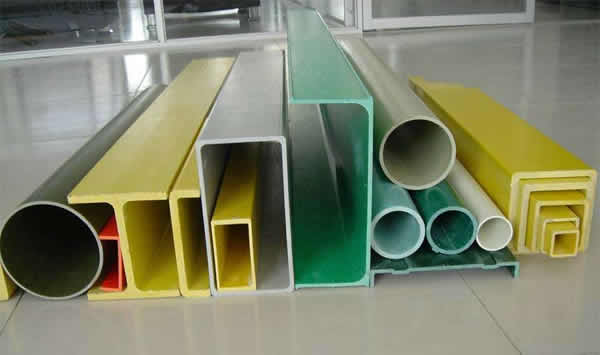FRP or fiber-reinforced
plastic is a polymer matrix that has been reinforced with fibers like all
composite materials, FRP combines the qualities of both the components to make
a superior combination. The plastic by itself is weak, but when combined with fibers,
it achieves a far superior tensile strength and stiffness.
These qualities enable
us to mould FRP into pipes. FRP pipes are widely seen in industrial,
commercial and residential properties. Because of its unique properties it
finds wide usage in a range of fields, from aerospace to the construction
industry. Although FRP is sometime confused with simple thermoplastic pipes
like PVC, it is very different. The additional reinforcement of fibers give it
a completely new character.
History
Although FRP is seen as
a modern day product, it actually has a pretty old history. The history is FRP
begins when scientists and entrepreneurs realized the existence of polymers and
decided to blend two physically different elements for a composite element. The
first such composite polymer was bake lite, introduced in 1909.
But it was later in the
1930s that interest in fiber reinforced plastic grew, thanks to the aviation
industry. Soon various structures were made, from sheets to boats and planes.
But it was still very much at an experimental stage. It was only after
production technology and new products were invented/discovered that the mass
production of plastics became possible, eventually surpassing steel.
Centrifugal casing and
then filament winding brought in the industrial processing if FRP pipes. The
process was refined to enable the production of small diameter pipes. Soon
production picked up to come up with industrial quantities. It proved to be a
big boon for industries like the oils industry where steel was proving too
susceptible to corrosion. Soon the production and output was standardized with
national and international standards.
FRP Pipes Today
Today fiber reinforced
plastics have become so commonplace that they are almost a part of our
landscape! They are used in many different ways gratings, cable trays, pipes,
roofs, ducts, doors and different equipments. FRP pipes, once used mainly in the oil industry, have grown far and
wide beyond that.
FRP pipe has high
usability in a range of applications, from carrying water distribution networks
to carrying flammable liquids. Let us look at some of these fields:
In wastewater management: Sewer water is highly corrosive and
alternative pipe materials such as concrete, steel and aluminum is eventually
corroded by its continuous flow. FRP, on the other hand, has a high resistance
to such corrosive liquids. Although concrete still remains more prevalent here,
FRP pipes are slowly making a wider appearance.
Oil and gas industry: What makes an FRP pipe ideal here is its high resistance
to corrosion, ability to withstand pressure and its imperviousness to
environmental factors like extreme temperatures. Unlike steel and aluminum, FRP
does not get corroded over time while carrying crude oil and other such gases
and oils. It can withstand high pressure applications that can go up to 4000
psi. It means that we can use it for carrying highly compressed liquids and
gases. Since oil is often excavated in rather inhospitable terrains, such as
under seabed, in desert or in the Arctic Circle, the FRP pipe’s resistance to
environmental conditions also becomes important. It is often the preferred
conduit in these extreme conditions. It can be buried under the earth or
underwater without any fear of corrosion. Hence, FRP pipes have wide functionality
in oil exploration, excavation, recovery and distribution.
Water distribution network: FRP pipes are already a
common sight in many properties. Their light weight and durability means that
these can easily be used to fit water systems in residential and commercial
properties. However, they are yet have a better penetration in the municipal
water systems where steel and concrete are used more often. But FRP’s ability
to withstand corrosion and hydraulic pressure means that it can be a more suitable
alternative. Many FRP pipe manufacturers are now working on facilitating a FRP
pipe-based infrastructure.
Conclusion
Many manufacturers
are now focused on the future of the FRP pipe. Given its many advantages, FRP
can have a much deeper penetration in a number of industries and fields. Its
anti-corrosive properties coupled with its high durability makes it ideal for
carrying a number of liquids in extremely inhospitable terrains. 
